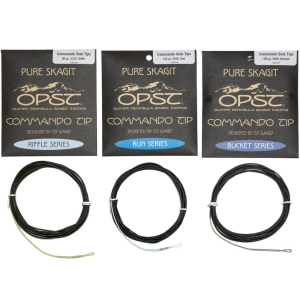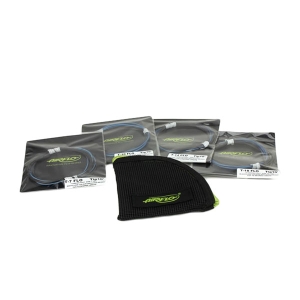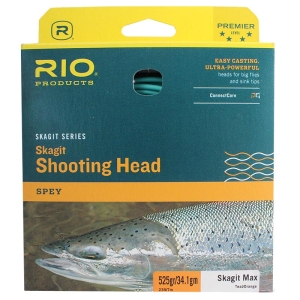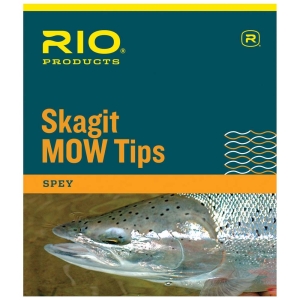Skagit Fly Line Information
Skagit fly lines have revolutionised the world of salmon fishing, especially in rivers with heavy flows and deep pools. These specialised lines are designed to cast large, heavy flies and sinking tips with ease, making them incredibly effective for pursuing salmon in challenging conditions.
The Skagit fly line system consists of a short, powerful head section connected to a thicker, heavier running line. The head section is typically 20 to 25 feet long and is specifically designed to carry the weight of heavy flies and sinking tips, enabling anglers to make effortless casts even in strong currents. Skagit lines also excel in windy conditions, as their compact weight punches through the air more effectively!
Main advantages of Skagit fly lines
One of the main advantages of Skagit fly lines is their ability to generate high line speeds with minimal effort. The short and compact head design allows for easy loading of the rod, making it possible to launch heavy flies and sinking tips long distances. This is particularly advantageous when targeting salmon in deep pools or fast-moving water where a quick turnover and depth penetration are crucial.
Skagit lines are primarily used with two-handed or spey casting techniques, although they can also be used with single-handed rods. The heavier weight and shorter length of the Skagit head make it ideal for casting with double-handed fly rods and heavier lines. This combination provides the power and leverage necessary to handle big salmon flies and deliver them accurately to the target area.
When it comes to line selection, Skagit fly lines are available in a variety of densities, including floating, intermediate and sinking options. Skagits can often be available in multi-density. Anglers can choose the most appropriate line for the fishing conditions they encounter, allowing for effective presentations at different water depths. The ability to easily swap sinking tips or add poly leaders further enhances the versatility of Skagit lines.
The profile of Skagit fly lines typically features a short, aggressive front taper that transitions into a thick and powerful belly section. This design allows for efficient turnover of heavy flies and sinking tips, even in challenging wind conditions. The rear tapers are thicker and more durable, facilitating better control and shooting ability.
In summary, Skagit fly lines have become indispensable tools for salmon anglers targeting fish in rivers with heavy flows and deep pools. Their ability to handle large flies and sinking tips, coupled with the power and ease of casting, make them highly effective in challenging conditions. Whether you're pursuing salmon in fast-moving water or targeting deep pools, the Skagit line system provides the control and performance needed to succeed.











